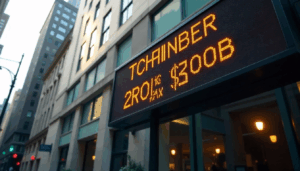U.S. Treasury Market Faces Shift as Stablecoins Edge Toward $750 Billion, Standard Chartered Reports
Stablecoins Could Reshape Treasury Markets at $750B Milestone, Says Standard Chartered
Stablecoins may begin to significantly influence U.S. financial markets once their total market value hits $750 billion, according to Geoff Kendrick, head of digital assets research at Standard Chartered.
In a note published Tuesday following meetings in Washington, New York, and Boston, Kendrick said that conversations with policymakers, hedge funds, and crypto firms revealed a growing consensus: a $750 billion stablecoin market would mark the point where digital dollars begin to alter how government debt is issued, affect monetary policy, and shift the demand dynamics in U.S. Treasury markets.
With the current stablecoin market standing at approximately $240 billion, Kendrick believes that figure could more than triple by the end of 2026, spurred by regulatory clarity — especially if the bipartisan GENIUS Act is passed, potentially as early as next week.
“If the U.S. stablecoin market reaches that size, the demand for Treasury bills (T-bills) to back those assets could force a pivot in debt issuance toward shorter maturities,” Kendrick wrote. “That would impact the Treasury yield curve and overall demand for dollar-denominated assets.”
Stablecoins, which are designed to maintain a stable value — usually pegged to the U.S. dollar — are typically backed by cash or short-term government securities. As adoption increases, their growing demand for T-bills could place them in direct competition with traditional fixed-income investors.
During his U.S. tour, Kendrick met with a broad range of market participants — including Bitcoin miners, crypto-native companies, traditional asset managers, and policymakers — and reported that stablecoins were the most talked-about topic across all groups.
He also noted that stablecoin issuance may soon extend beyond the crypto sector, with banks and even municipal governments eyeing entry into the space.
In emerging markets, however, the rise of stablecoins could present financial risks. Kendrick warned that residents in these countries are increasingly using stablecoins as digital savings tools, potentially draining local banking systems and central bank reserves. This trend could destabilize economies reliant on dollar liquidity to manage exchange rates and enforce capital controls.
In the U.S., Kendrick said stablecoins could also start pulling corporate treasury funds away from traditional banks and into tokenized financial alternatives — though how fast that shift happens remains unclear.
Investor interest in the sector is already visible in equity markets. Circle (CRCL), the company behind the USDC stablecoin, has surged 540% in value since going public last month — a sign of growing market conviction in stablecoins as foundational elements of the future financial system.
Share this content:













